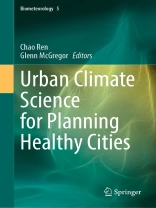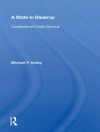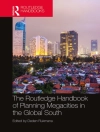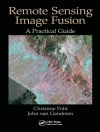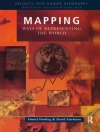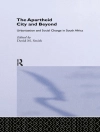This volume demonstrates how urban climate science can provide valuable information for planning healthy cities. The book illustrates the idea of ‘Science in Time, Science in Place’ by providing worldwide case-based urban climatic planning applications for a variety of regions and countries, utilizing relevant climatic-spatial planning experiences to address local climatic and environmental health issues. Comprised of three major sections entitled ’The Rise of Mega-cities and the Concept of Climate Resilience and Healthy Living, ‘ ‘Urban Climate Science in Action, ‘ and ‘Future Challenges and the Way Forward, ‘ the book argues for the recognition of climate as a key element of healthy cities. Topics covered include: urban resilience in a climate context, climate responsive planning and urban climate interventions to achieve healthy cities, climate extremes, public health impact, urban climate-related health risk information, urban design and planning, and governanceand management of sustainable urban development. The book will appeal to an international audience of practicing planners and designers, public health and built environment professionals, social scientists, researchers in epidemiology, climatology and biometeorology, and international to city scale policy makers.
Chapter “Manchester: The Role of Urban Domestic Gardens in Climate Adaptation and Resilience ” is available open access under a Creative Commons Attribution 4.0 International License via link.springer.com.
Inhoudsopgave
Chapter 1. Urban Climate Science for Planning Healthy Cities.- Chapter 2. Healthy City and Its Planning.- Chapter 3. Embedding Climate Change in Urban Planning and Urban Design in New York City.- Chapter 4. Cool Cities by Design: Shaping a Healthy and Equitable London in a Warming Climate.- Chapter 5. Manchester – The Role of Urban Domestic Gardens in Climate Adaptation and Resilience.- Chapter 6. Tokyo Heat Island Adaptation Measures.- Chapter 7. Hong Kong: Climatic Application in Urban Planning and Design at Multiple Scales for Creating a Healthy Living Environment.- Chapter 8. Air Pollution Prevention and Urban Planning Response—Building a Healthy Beijing.- Chapter 9. Singapore: An Integrated Multi-scale Urban Microclimate Model for Urban Planning in Singapore.- Chapter 10. Creating Cooler, Healthier and More Liveable Australian Cities Using Irrigated Green Infrastructure.- Chapter 11. What Alternatives Does Paris Have to Adapt to Future Heat Waves?.- Chapter 12. Urban Climate in Urban Planning – The Experience from Stuttgart.- Chapter 13. India: Heatwave and Action Plan Implementation in Indian Cities.- Chapter 14. Guidance on Integrated Urban Hydro-meteorological, Climate and Environmental Services: Challenges and the Way Forward.- Chapter 15. Characterising Urban Morphology for Urban Climate Modelling.- Chapter 16. The Synergistic Impacts of Urban Air Pollution Compounding Our Climate Emergency.- Chapter 17. International Research Collaboration and Programmes for Urban Climate Science for Planning Healthy Cities.- Chapter 18. Conclusions and Moving Forward.
Over de auteur
Dr. Chao Ren is an Associate Professor in the Faculty of Architecture at the University of Hong Kong. Her research interests include sustainable environmental design, climate sensitive design, and planning.
Dr. Glenn Mc Gregor is a Professor of Climatology in the Department of Geography at Durham University. His research interests include climate and health, synoptic climatology, climate and society, and hydroclimatology.
